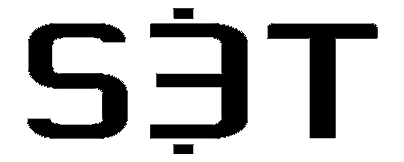S3T April 3: Multi-chains, Eth killers, art, story telling, undocumented species, lawns...

Winner-take-all gives way to interoperable coexistence in the blockchain competition. Competitors and skeptics can be key partners, illuminating the way forward for change leaders willing to engage in creative story telling and inclusive strategy-making.
The Multi-Chain Future
Competitive Narrative is changing
The previous competition narrative between Ethereum vs other chains ran something like "Ethereum is so slow/expensive that (the others) will eventually kill it." OR "Ethereum has massively more adoption and (the others) will never catch up."
This recent comparison of the top so-called Ethereum killers provides a good rundown of the competitive field and their prospects. Doubtful there will be much killing.
For me, it isn't a question of which chain will win long term. Its more about which chains will do well? Doing well comes down to
core value propositions offered by the different chains:
- Ethereum defenders like to point to the great developer ecosystem and the thousands of Ethereum based projects.
- Solana advocates brag about how fast and cheap transactions are.
- Cardano fans talk about environmental friendliness.
Questions Facing Ethereum
Ethereum has a much larger market cap than any of its rivals so far, but does face some challenging questions about its future - especially if the Ethereum community pins its continued dominance on the high number of Ethereum projects:
- How many of these projects are viable long-term? How many are based on value propositions that are meaningful to mainstream consumers?
- Will Ethereum ever be a consumer friendly technology that gains mainstream adoption, or is it just going to be a developer sandbox - a great launch pad for "under the hood" capabilities that are a level or two removed from end user experience and affordability?
- What is the core value proposition that Ethereum puts forward and will other chains be able to replicate it?
So far what we’re seeing is that when crypto consumers have a choice they choose a network that has lower gas fees and better speed. Will Eth 2 change this? In time to make a difference? I don't think Ethereum is in danger of being "killed" by competitors. But will it be able to retain its dominance?
Interoperability introduces a new dynamic
A new set of players sense that "No-one wants to be locked into one network, one play-to-earn game or one currency." and are driving interoperability to make the multi-chain world seamless for end users with different use cases. For glimpses of where this is headed, consider Aave v3's new portal and cross-chain accounting.
Expect the different chains to key off of each other, finding better and better ways to up their game - like Polygon's move to Zero Knowledge Proofs in anticipation of Ethereum’s shift to Proof of Stake. Likewise, Ethereum v2 improves its environmental cred by reducing Ethereums energy consumption by an astounding 99%.
This won't be a zero sum game. Different chains have different developer communities. Different kinds of users have different needs. Different kinds of Layer 1 and 2 chains will fit those different needs. In other words I think there will be a set of winners.
Taken together these points support an investor thesis that anticipates the interoperable coexistence of multiple chains.
Blockchains are like Cities
Haseeb Qureshi argues that its misleading to think of competing blockchains the same way you'd think of social media or other technology platforms. Instead its more accurate to think of blockchains as the new cities. I think it's a good analogy - cities belong to economic ecosystems, exchange value, compete and attract citizens who like the unique mix of capabilities offered by a specific city. We don't ask "Which city will win over all the other cities?" We intuit that there will always be multiple cities.
It will be interesting to watch the market caps of Cardono, Solana and Polkadot - Ethereum's closest (but still distant) competitors. Algorand will continue to grow its community of 500 global organizations building projects on its ecosystem (Directory here). Tezos is tiny by comparison, but this year is executing on some ambitious gaming plans.
![The Night Train, [undated, 19th Century]
By: David Cox](https://images.unsplash.com/photo-1577083164837-7082127bd3ff?crop=entropy&cs=tinysrgb&fit=max&fm=jpg&ixid=MnwxMTc3M3wwfDF8c2VhcmNofDR8fEJpcm1pbmdoYW0lMjAlMjBUcnVzdHxlbnwwfHx8fDE2NDg5NTE3MjY&ixlib=rb-1.2.1&q=80&w=2000)
NFTs Flip Fine Art
Professional art appraisers are now beginning to focus on appraising NFTs. Carolyn Taylor in this interview shares how to value NFT art - it’s different from traditional art appraisal and different goals can lead to different appraisals. Interesting angles I hadn't thought of.
Her firm the Appraisal Bureau works with owners to help them appraise the pieces they have.
The estimate above claims 5x more spent on NFTs vs fine art. ArtNews published another estimate suggesting it might be closer to 3x. Either way, its significant. Interesting point: some of the higher priced NFTs were purchased by groups who were able to organize thanks to the DAO functionality available in the crypto space.

Change Leadership
Partnering with Skeptics
Those leading and investing in change often face skepticism and resistance. Metamorphosis is part of life, but is rarely welcomed outright - at least by humans. Caitlin Long - a veteran banker turned crypto exec - shares key insights in an interview on how JP Morgan Flipped Goldman Sachs in Crypo. The interview is notable in its review of the current crypto standings of Goldman (early crypto advocate) vs JP Morgan (hesitant adopter). Her insights suggest that skeptics and resistors may actually play a positive role in creating more lasting, more comprehensive embrace of change.
"[The CTO] was so skeptical, and I loved working with him because he really forced me to learn and justify and understand where he was coming from," Long said. "And it actually helped solidify my own views of especially Bitcoin but but crypto more broadly."
Fascinating read and great example of constructive partnership with stakeholders who are initially hesitant or resistant.
Dismiss the Dismissive Attitude
Change leaders live through cycles that go something like this:
- In the beginning everyone thinks you or your ideas are crazy
- Then some start to come around, and momentum gathers
- Eventually what orginally seemed radical and new becomes the status quo.
After working and living through several of these cycles, it can be tempting to develop a dismissive attitude toward skeptics and resistors. That can cause you to miss valuable opportunities.
Far better, if you are able to harness the skeptics and resisters to help you learn, develop your thinking, understand the pitfalls and work out the bugs. Try to relate and partner in a way that shows you value their carefulness and are open to feedback. Easier said than done, but worth it in the long run if you want to enable sustainable enduring change. Honing your story telling ability can help.
Story Telling: developing your ability to be strategic
This may sound strange, but story telling is a critical skill for engaging people in the change that is coming, and helping them to take proactive action. This, it turns out, is also one of the best ways to harness the benefits that skeptics can offer, while also dealing with resistance in a constructive manner. Stories help people shift their perspective.
How do you develop your confidence at understanding and telling the story of the future (what we sometimes call a 'thesis') so you can help people think more creatively and shift their perspective?
Jessica Stillman shares the key points of perspective shifting in this highly recommended read on creativity.
To prompt yourself to tell a story of how things are changing, you can start by asking questions like these:
- How is the game changing in my industry, or in the way customers are trying to satisfy their needs? How will companies be forced to play the game differently in the future?
- What new "ways to play" are being introduced by technology?
- How are peers of my company (or industry) starting to experiment with those new ways to play? Are new competitors emerging?
Influential Dialogue = Good Strategy Making
Individuals or teams who are hesitant to embrace a new approach are often concerned about the risks or things that are "not fully baked." One way to talk though this is to focus on capabilities becoming available, their value and what happens as they are adopted:
- Technology innovations often introduce new primitives or new foundational capabilities or new power dynamics.
- Different industries experiment (often at different rates) to see if they provide value for their specific use cases.
- Its helpful to look across industries and watch as they go through their respective adoption curves.
Working with your stakeholders - including the skeptics - to create a story that describes your path forward offers an inclusive way to plan and learn together. The more you value communication and welcome concerns and feedback, the more you set the team up for success.
You can take the story telling a step further: Write the story or press release that you want to be able to tell at the end of the project.
Why does this work? Intentional living is a process of creating stories and then living them out. If you can envision and tell those stories, people join forces with you and learn how to make it happen successfully.

Nature Notes
Documenting Biodiversity
I continue to be amazed at just how much of the biodiversity of this planet remains undocumented and undiscovered.
Just a couple additional examples and reads I came across this week:
- Alexander Semenov Has dedicated his life to photographing - often for the first time - the stunning and bizarre beauty of cold water invertebrates.
- Up to 40% of this family of bat species may be still unidentified.
When reading natural histories of species, I’m often surprised by how often I encounter frank admissions that “nothing is known” about nesting or feeding behaviors of relatively common species - or how often the known behaviors are based on 1-2 observations from decades ago.
The Blue Gray Gnatcatcher - a new spring arrival in the photo above - is an example. According to the Birds of the World (the definitive collection of information on bird species), little is known about its migratory behaviors. Seven subspecies have been proposed, but some need verification.
So much remains to be learned and discovered. And the exciting part is that now there are more opportunities than ever to get involved and contribute to knowledge of our biodiversity. eBird.org and iNaturalist are a couple of great starting points. For more ideas visit https://www.citizenscience.gov/
Lawns Awaken
Its that time again. Things are growing. The lawn is awakening. This article caught my eye because we've always allowed and encouraged clover in our yard. The bees love it, and it turns out clover has a lot of other benefits as well.
:extract_focal()/https%3A%2F%2Fpocket-syndicated-images.s3.amazonaws.com%2Farticles%2F7626%2F1648160869_ScreenShot2022-03-24at3.24.42PM.png)
Final Note
Thank you again for reading and forwarding to friends! To join the conversation, please visit S3T Discord, Twitter and now LinkedIn. Get outdoors, take care of family, and have a good week!
Ralph
Opinions mine. Not financial advice. I may hold assets discussed.


Member discussion